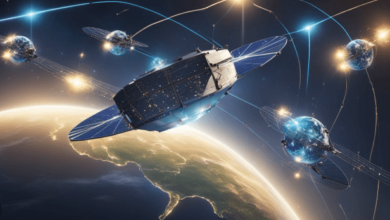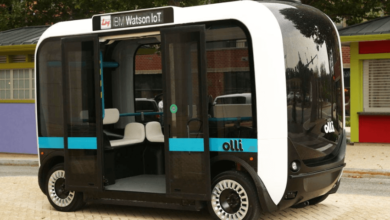AI and Robotics in Disaster Response

Artificial intelligence (AI) and robotics are transforming disaster response by enhancing efficiency, speed, and effectiveness in handling crises. These advanced technologies are becoming critical tools for addressing natural disasters, industrial accidents, and humanitarian emergencies. By providing real-time data analysis, automating tasks, and enabling remote operations, AI and robotics are redefining how we manage disaster situations.
The Role of AI in Disaster Response
AI has proven to be a game-changer in disaster management, offering powerful tools for predicting, monitoring, and mitigating the impact of disasters. Machine learning algorithms analyze vast datasets to predict natural calamities like hurricanes, earthquakes, and floods. Early warning systems powered by AI enable authorities to take proactive measures, saving lives and resources. In addition to prediction, AI supports crisis management by analyzing satellite imagery and social media posts to assess damage and locate affected populations. These insights guide rescue teams, helping them prioritize areas in urgent need of assistance.
During disasters, AI-based chatbots and virtual assistants provide critical information to the public. They answer questions about evacuation routes, safety measures, and shelter locations, ensuring timely dissemination of life-saving information. AI also aids in resource allocation, optimizing the deployment of emergency supplies and personnel to maximize impact.
Robotics in Search and Rescue Operations
Robotics plays a pivotal role in search and rescue missions, particularly in hazardous or inaccessible environments. Drones equipped with cameras and sensors survey disaster zones, capturing high-resolution images and identifying survivors trapped under debris. These devices can access areas where human rescuers cannot, providing a clear understanding of the situation on the ground.
Robots are also used to clear rubble, deliver supplies, and perform delicate tasks in unstable environments. For example, snake-like robots equipped with cameras can navigate tight spaces to locate survivors in collapsed buildings. Robotic arms and drones with thermal imaging capabilities detect heat signatures, pinpointing the locations of individuals in need of rescue.
Autonomous underwater robots are instrumental in responding to marine disasters such as shipwrecks and oil spills. They survey underwater environments, locate wreckage, and assist in containment efforts. These robots minimize risks to human divers and accelerate recovery operations.
AI and Robotics in Disaster Recovery
Beyond immediate response, AI and robotics play a crucial role in disaster recovery. AI-powered tools assess the extent of damage to infrastructure, estimate costs, and plan reconstruction efforts. Predictive models help governments and organizations allocate resources effectively, ensuring a faster return to normalcy. Robotics contributes to rebuilding efforts by automating construction tasks, such as debris removal and infrastructure repair. Robots equipped with 3D printing technology create temporary shelters and bridges, addressing urgent needs during the recovery phase.
Robots also assist in environmental cleanup, particularly in disasters involving toxic spills or radioactive contamination. They perform tasks like soil sampling and waste removal, minimizing human exposure to hazardous materials. By accelerating these processes, robotics ensures a safer and more efficient recovery.
Benefits of AI and Robotics in Disaster Response
The integration of AI and robotics offers numerous advantages in disaster response. Speed and precision are among the most significant benefits, as these technologies process information and execute tasks faster than humans. This efficiency is crucial in time-sensitive situations where delays can lead to loss of life.
AI and robotics also enhance safety by reducing human exposure to dangerous conditions. Robots can operate in extreme environments, from collapsed buildings to radioactive zones, performing tasks that would otherwise endanger human lives. These technologies improve decision-making by providing accurate, real-time data, enabling responders to focus on critical areas.
Challenges and Ethical Considerations
Despite their potential, the use of AI and robotics in disaster response presents challenges. Data accuracy is a primary concern, as errors in predictions or analysis can have severe consequences. Ensuring that AI systems are unbiased and reliable is essential for effective decision-making. Privacy concerns arise when AI systems analyze data from social media or surveillance, requiring stringent measures to protect individuals’ information.
The deployment of robotics involves logistical challenges, such as battery life, durability, and the need for skilled operators. Additionally, the high cost of advanced robots and AI systems can limit their accessibility, particularly for resource-constrained regions. Ethical considerations, including the prioritization of tasks and equitable distribution of resources, must also be addressed to ensure that these technologies serve the greater good.
The Future of AI and Robotics in Disaster Response
The future of AI and robotics in disaster response is promising, with ongoing research and development expanding their capabilities. Innovations in swarm robotics could enable the deployment of multiple robots working collaboratively to tackle large-scale disasters. AI-powered predictive models are becoming increasingly accurate, enhancing disaster preparedness and response strategies.
The integration of 5G networks and IoT devices will further enhance the connectivity and efficiency of these technologies. Real-time communication between AI systems, robots, and human operators will streamline operations, reducing response times and improving outcomes. Governments and organizations are increasingly investing in AI and robotics, recognizing their potential to save lives and mitigate the impact of disasters.
Conclusion
AI and robotics are revolutionizing disaster response by combining technological precision with human ingenuity. These innovations enhance preparedness, accelerate response times, and streamline recovery efforts, ultimately saving lives and reducing suffering. As these technologies continue to evolve, their role in disaster management will only grow, offering new possibilities for a safer and more resilient world.




